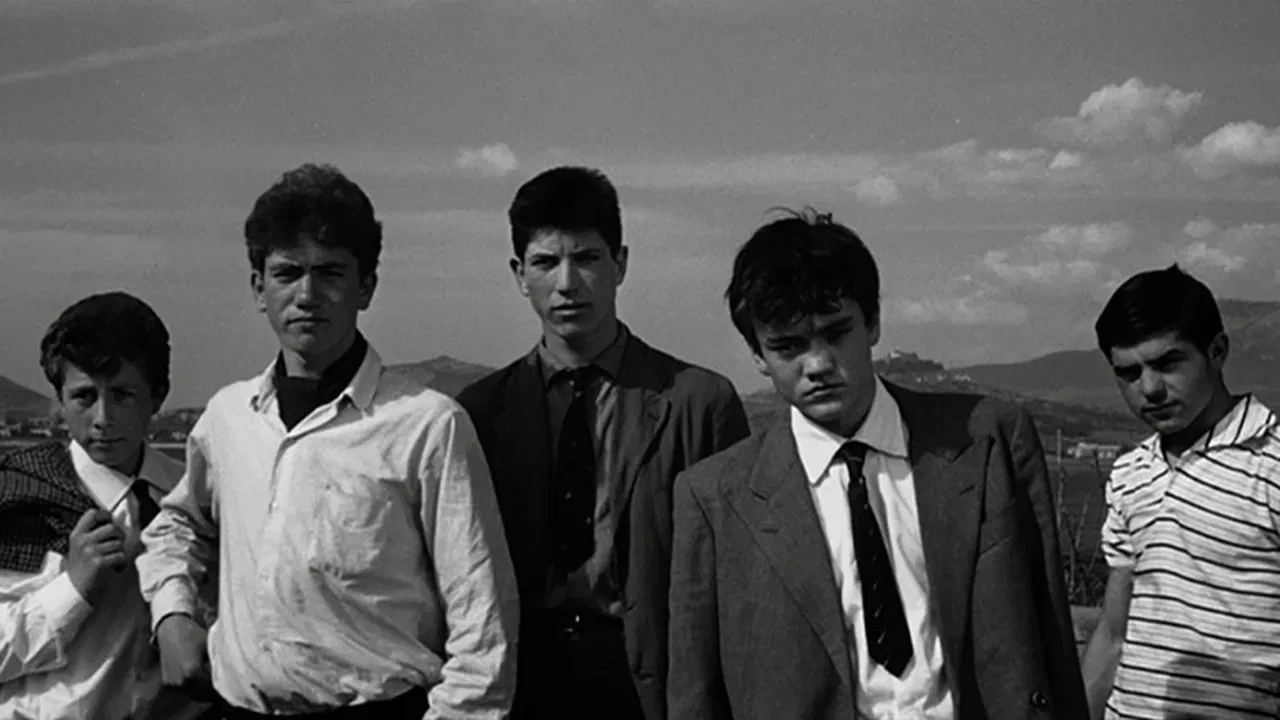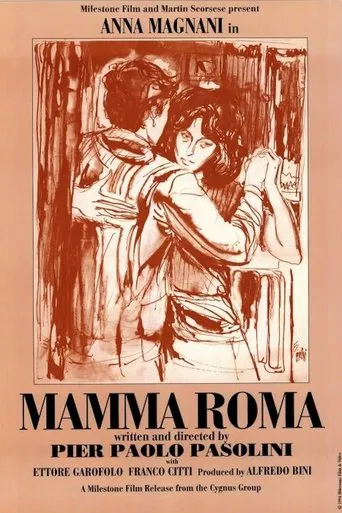

One of the main things I noticed about Pier Paolo Pasolini's 1962 film is how many similarities it has with Fellini's 'Nights of Cabiria', which was made five years earlier.Not least of all, the feisty Anna Magnani as the 40 something whore of the title, nick-named presumably after her reputation as the best working woman in the city. There's also the fact that she desperately wants to retire, set up a fruit and veg stall and finally, get to know her teenage son.Then, there's the modern, on 'the edge of town' high-rise flats and wasteland that borders flanks them. Many Italian directors of the day used such locations, presumably as they were easy to film on and probably didn't require the expense and red-tape of getting permission to film in the City centre. But, those landscapes show a universal sort of hinterland, between poverty and modernism and their ugly sparseness helps concentrate on the human figures we're watching.Giuletta Masina, as the protagonist Fellini's wife then, in comparison, also tries to retire but her romantic ideals go astray and she just heads for heartache, whilst Mamma Rosa wants to see the son that his father never saw and she feels guilty over her neglect of him and wants him to steer a course away from the way she has lived.Unfortunately, these ideals slip a little, her persistent pimp notwithstanding, as she relies more and more on using her rather dodgy contacts and past liaisons to achieve that. Sickly as a young child, Ettore (Ettore Garofolo) is, frankly not a handsome lad and when he gets to know a local girl who doesn't quite meet his mother's high ideals, she asks another much younger and prettier call-girl to introduce him to women for the first time, if you get my drift and of course she wants to get him a job....talk about a mother's love for a child being blind!Pasolini's approach is rather less dramatic and theatrical than Fellini's but is probably more consistent and it's more straightforward. You just have to love Mamma's offbeat approach to life, though not everybody does in the film, which is both amusing and entertaining. I understand that the cast were all amateur apart from Anna Magnani, as was common with films from the Italian neorealist movement and this makes it all the more natural and believable.I noticed that Pasolini employed some lovely steady camera shots, like with a Steadicam, slowly moving along streets, which gives a graceful fluidity, adding to an often poetic poise. However, the emotional buttons don't get pushed quite as hard or readily as with the Fellini comparison but it's still an enjoyable film, that certainly adds to the list of notable Italian films of the 50s and 60s.If you enjoy the straighter side of Fellini, such as La Dolce Vita, or any that depicts Rome in a contemporary way, then you'll enjoy this too. The 'Mr Bongo' release has a decent transfer with pretty good sound. A few subtitling spelling gremlins are just noticeable but never spoil the viewing pleasure.
... View MoreIt doesn't even have any machine guns in it. I like movies with machine guns, guns that go kaccka-kaccka-kaccka-pow! This pretentious, operatic Italian schlock makes me wish for a good, classy American film like Forrest Gump or The Shawshank Redemption or Braveheart. Roma is the virgin whore and Ettore is the eromenos Christ, that's all well and good, if you're a decadent gay like Pasolini was.On second thought, I love this movie, "Mamma mamma, I'm dying mama ... " It's transcendentally beautiful. You couldn't even make a movie like this today, it would burn up the screen, the movie theater complex, and consequently engulf the surrounding city and country side, and people would rather watch Jack Ass or The Shawshank Redemption besides. I take it to be emblematic of the decadence of our times that this didn't make IMDb's top 250.
... View MoreMany years ago, I saw this film in a theater, and I remember the final scene: Mamma opens the window and shouts at the houses opposite "Where are the responsibles?", or something like that. Now, in the Spanish DVD (98 min. running time) she opens the window as if she were to jump and only stares at the houses opposite, but no shouting. Besides, in the Leonald Maltin book the running time is 110 min. Has this something to do with the "original" and "US" versions? I should be grateful if someone could explain me it. I know that in this commentary there are not 10 lines of text but, sorry, the next one will be longer, thank you.
... View MoreJust wanted to point out that in the final scenes, Pasolini shows Ettore in jail (for stealing), strapped to a table, and it's very much like Andrea Mantegna's painting, "The Dead Christ." This might say a lot about what Pasolini thought about Christ's crucifixion, and how we might view Mamma Roma the whore and her son Ettore (perhaps not as mother and son, but as Mary Magdalene and Christ?). This final scene also makes one recall how the opening scene, the marriage of Carmine (the pimp) and his bride, looks so much like DaVinci's painting, "The Last Supper"... and so the film opens with a visual reference to Christ the pimp before he dies, and ends with one of Christ the thief after he dies.So many things about this film have elements of the story of Christ, only they're turned on their head. Ettore's relationship with the loose woman Bruna, his familiar dealing with moneylenders, his lazy and thieving followers, his lack of a trade, his stealing -- it's as if he's the opposite of Christ. And yet Ettore is blessed: he's rooted in nature (he grew up on a farm, he recognizes birds by their songs, acts spontaneously on his natural feelings of anger or lust) and he's set within a story that's essentially about the power of morality and redemption. Mamma Roma is a flawed woman but a good woman who's trying to do the right thing, to mend her ways. And Ettore is not so much an anti-Christ as he is a proto-Christ -- a pre-Christian figure. The film 'Mamma Roma' may have more to do with being a pagan story than a Christian one...
... View More